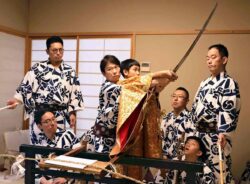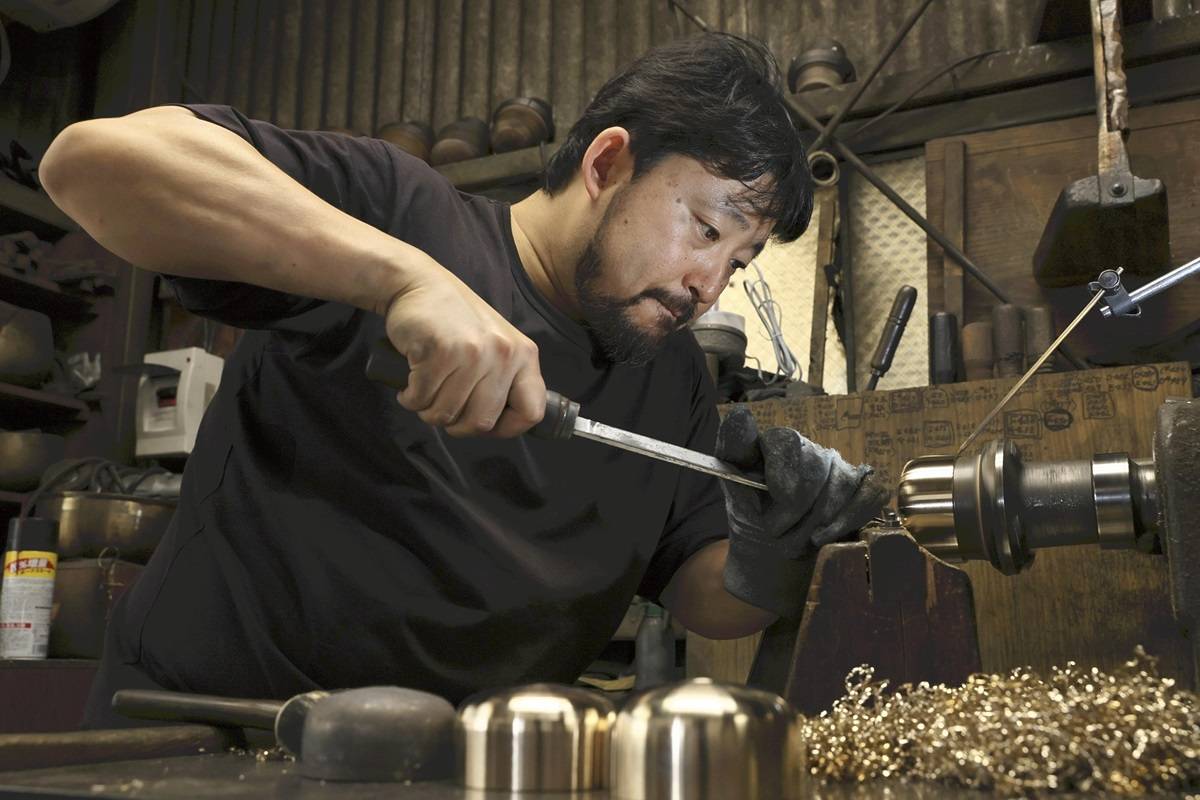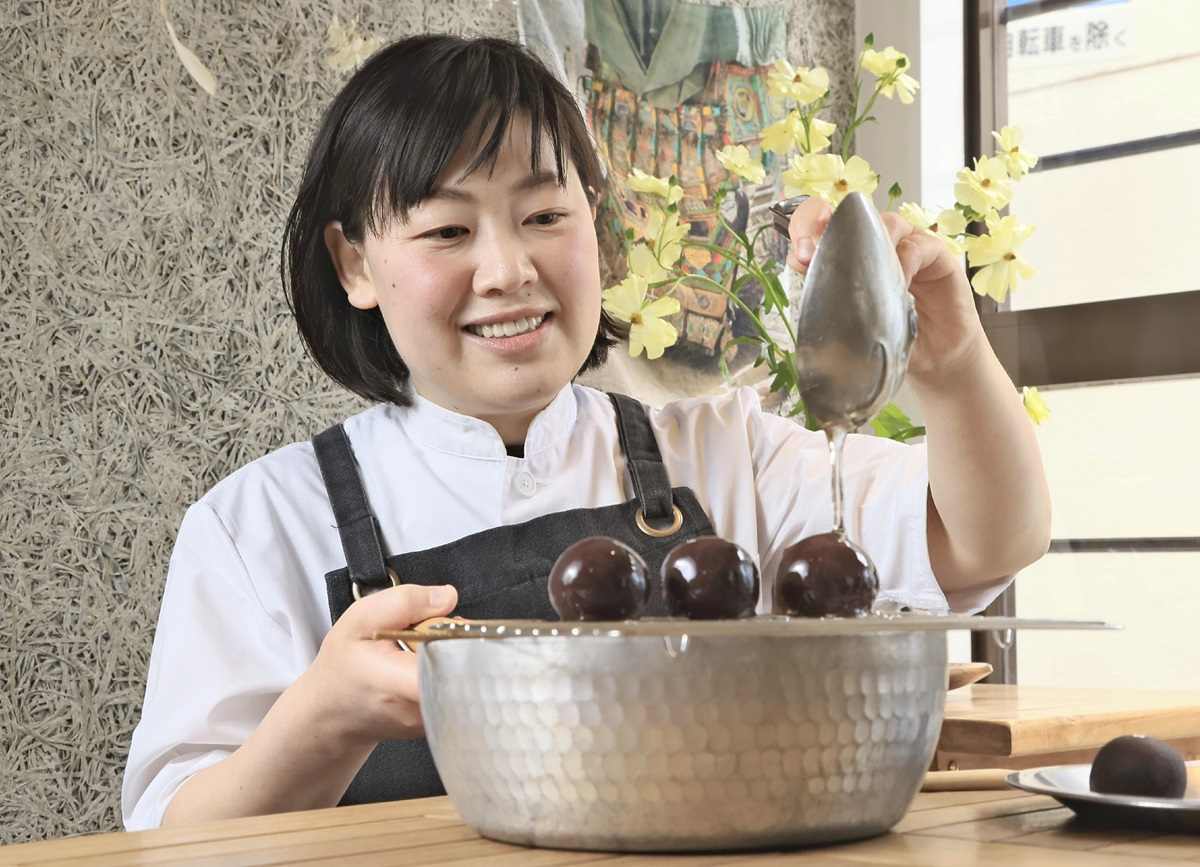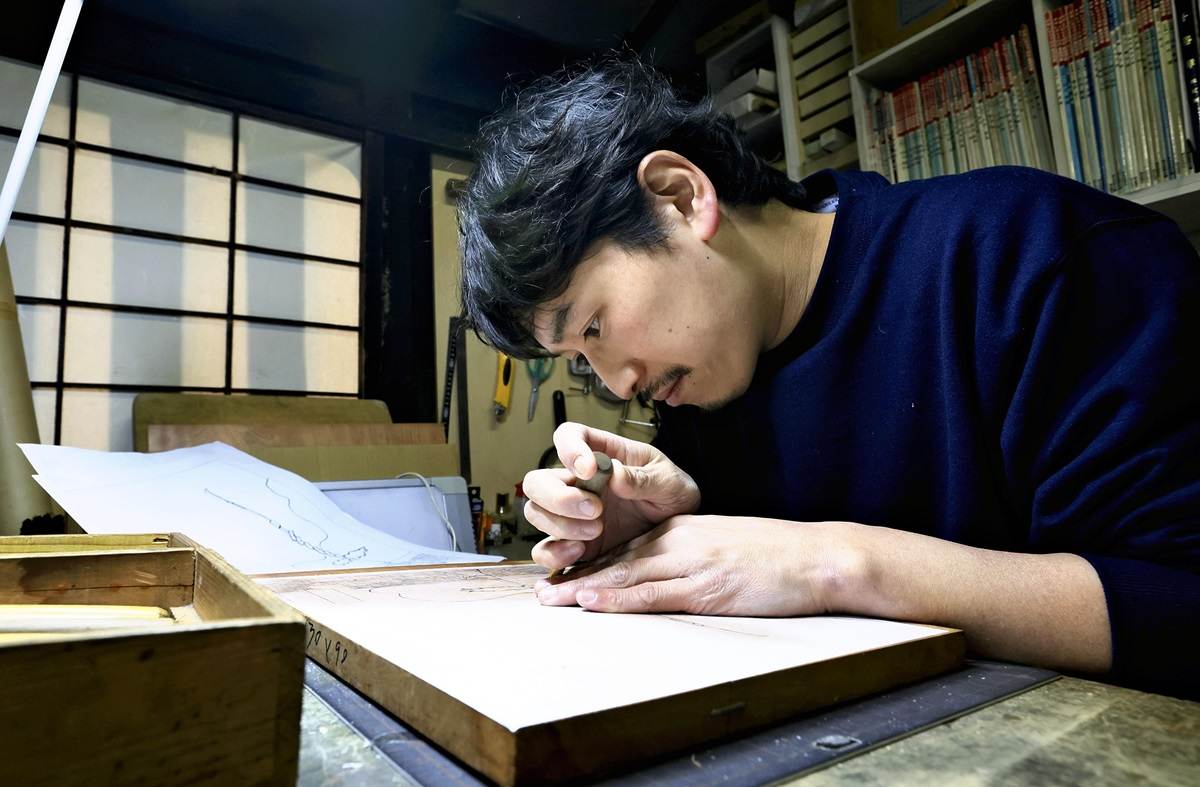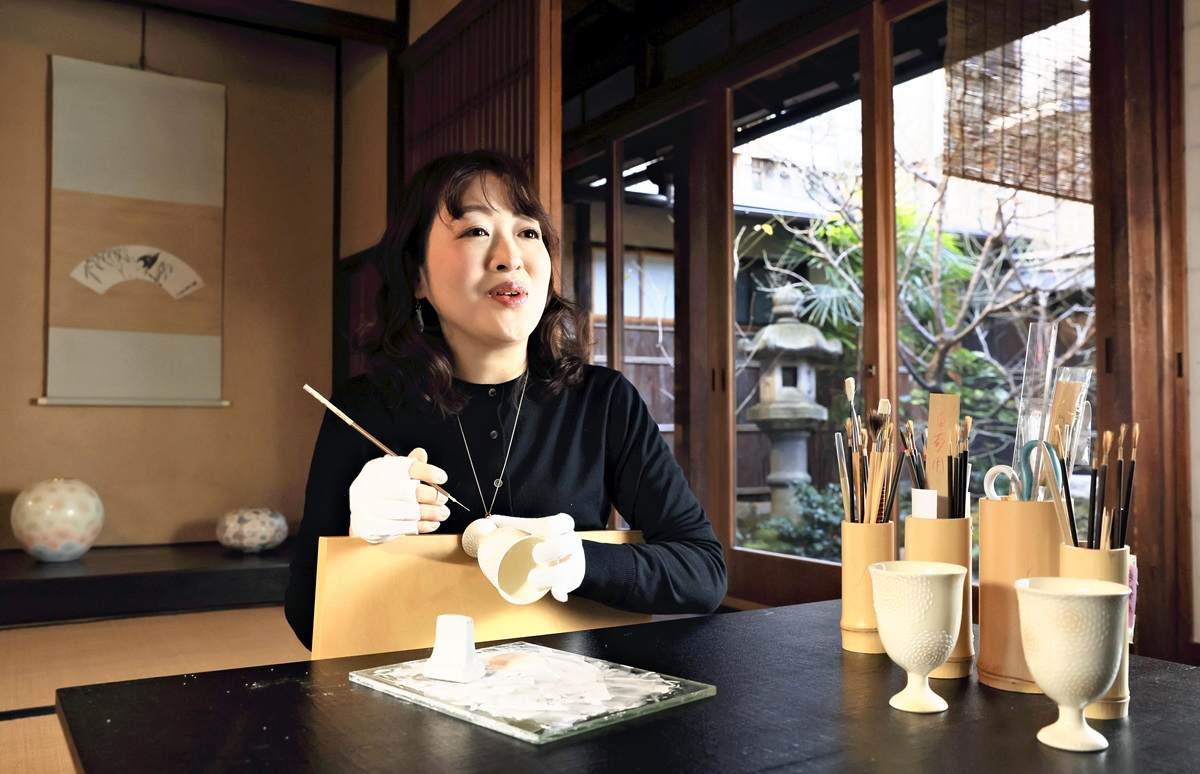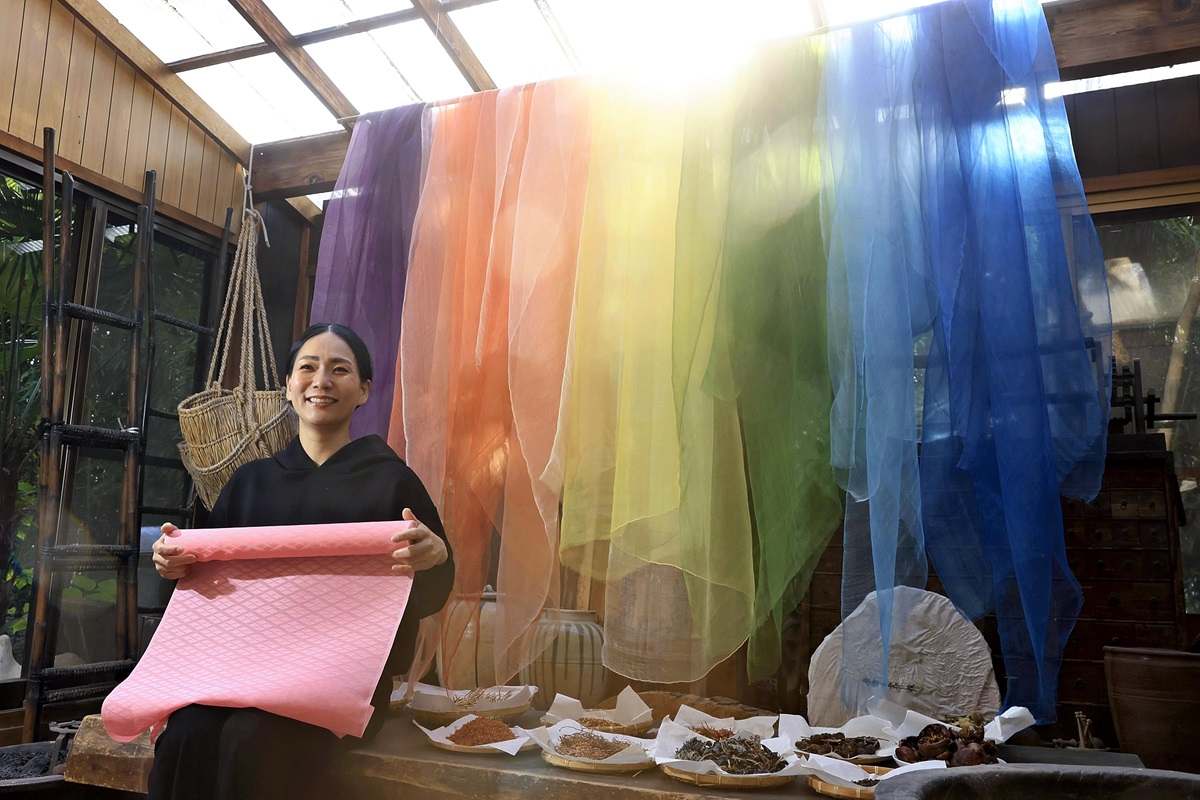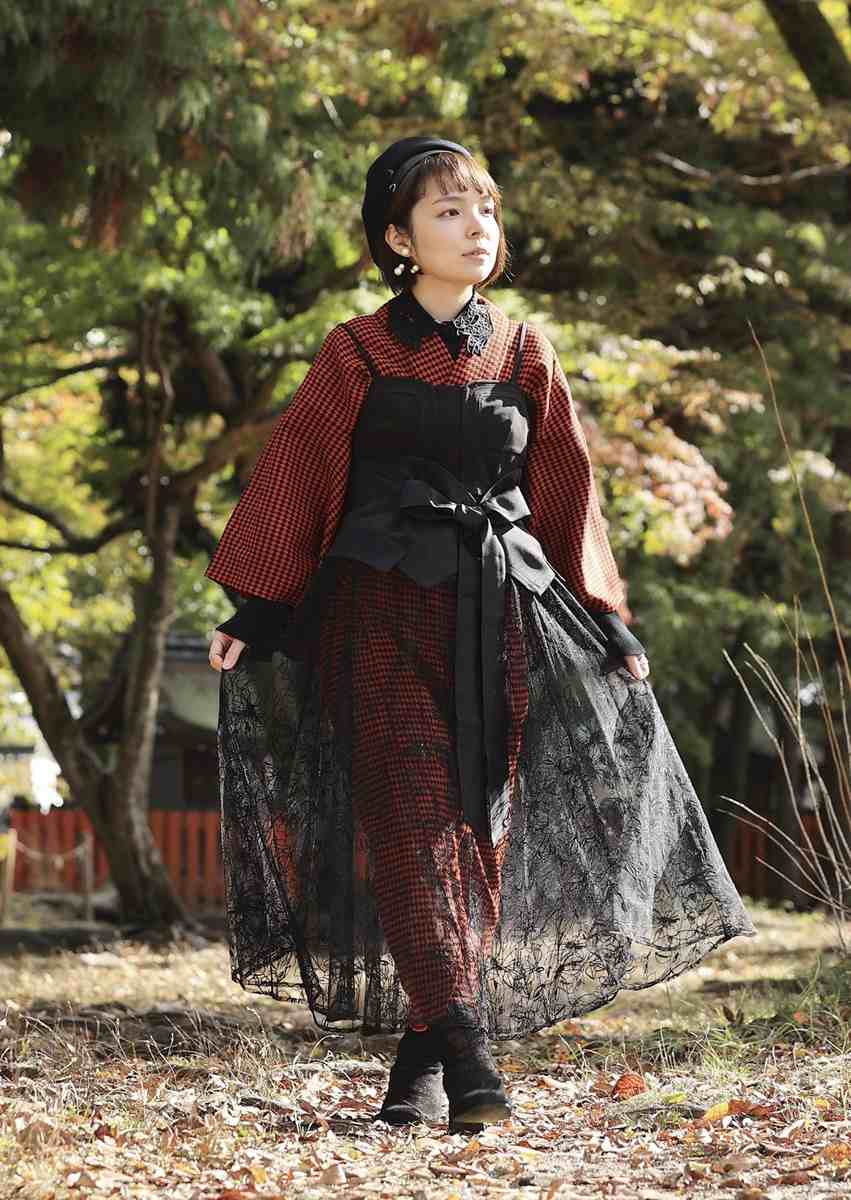Heirs to Kyoto Talent / Contemporary Items Help Pass on Timeless Beauty; Master Breathes New Life into Traditional Patterns
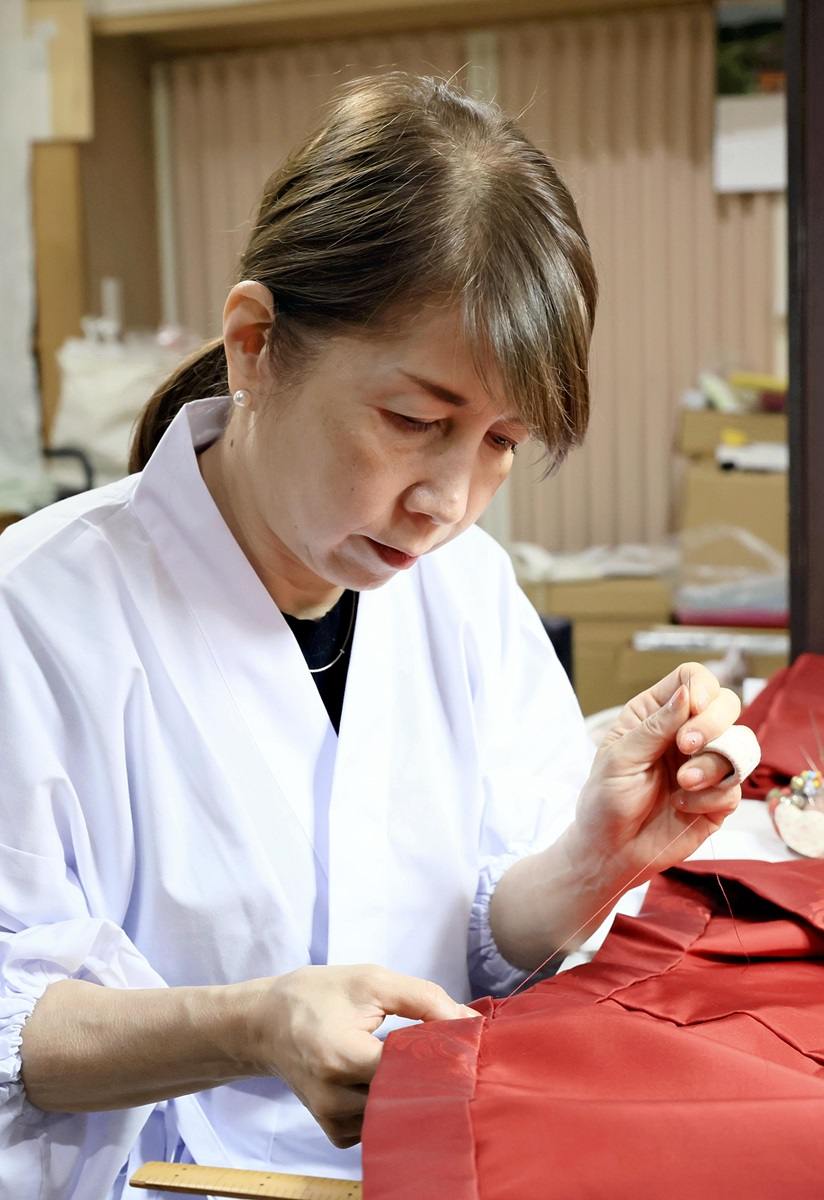
Chikako Kuroda sews attire according to ancient needlework methods.
10:18 JST, September 14, 2024
KYOTO — An ancient robe for women with layers of fabric expressing the changing colors of autumn leaves is designed with patterns of butterflies. With their wings spread out, the butterflies look frozen in time.

Traditional attire master Chikako Kuroda skillfully dressed a model in each garment of junihitoe, or twelve-layered kimono. The mukaicho, or facing butterfly pattern, a pattern originating from Japan and called Yushoku Monyo (Yusoku Monyo), has been said to symbolize prosperity for future generations.
“These patterns embody a prayer for peace and happiness, unlike Western emblems, which often signify power and strength,” said Kuroda, smiling softly.
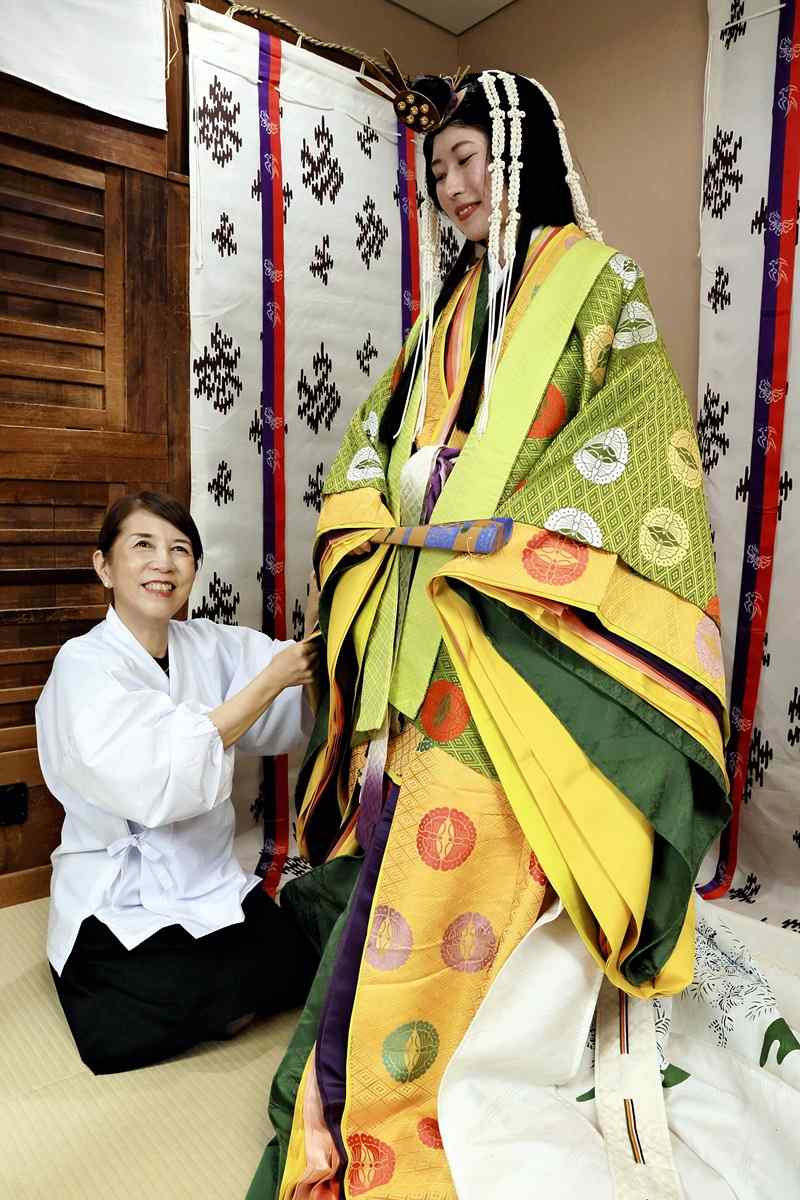
Chikako Kuroda dresses a junihitoe robe adorned with a butterfly pattern in Nakagyo Ward, Kyoto.
New twist on tradition
About 1,000 years ago, when Murasaki Shikibu wrote The Tale of Genji and Sei Shonagon penned The Pillow Book, Japan’s unique culture was flourishing. Court attire like junihitoe also added a touch of splendor to the then capital Kyoto.
Kuroda’s job is to tailor the finest silk fabrics worn by the nobility of that era, based on ancient precedents, and dress contemporary people in them. She has also been captivated by the patterns that adorn the kimono.
One such design is miru. Inspired by an unusual theme — sea staghorn, a type of seaweed — it symbolizes eternal life, with its resemblance to evergreen pine trees.
“The sophisticated and timeless patterns make me realize that they are the very pinnacle of design,” Kuroda said.
Aiming to share the beauty of Japanese designs with the world, Kuroda has brought new life to the realm of tradition by creating a brand of accessories, which includes business card holders, pouches and neckties.
Kuroda was originally a banker and entered this world after marrying Yukiya Kuroda, the 19th head of the Kuroda Shozokuten, a traditional attire shop in Kyoto dating back to the early Edo period (1603-1867).
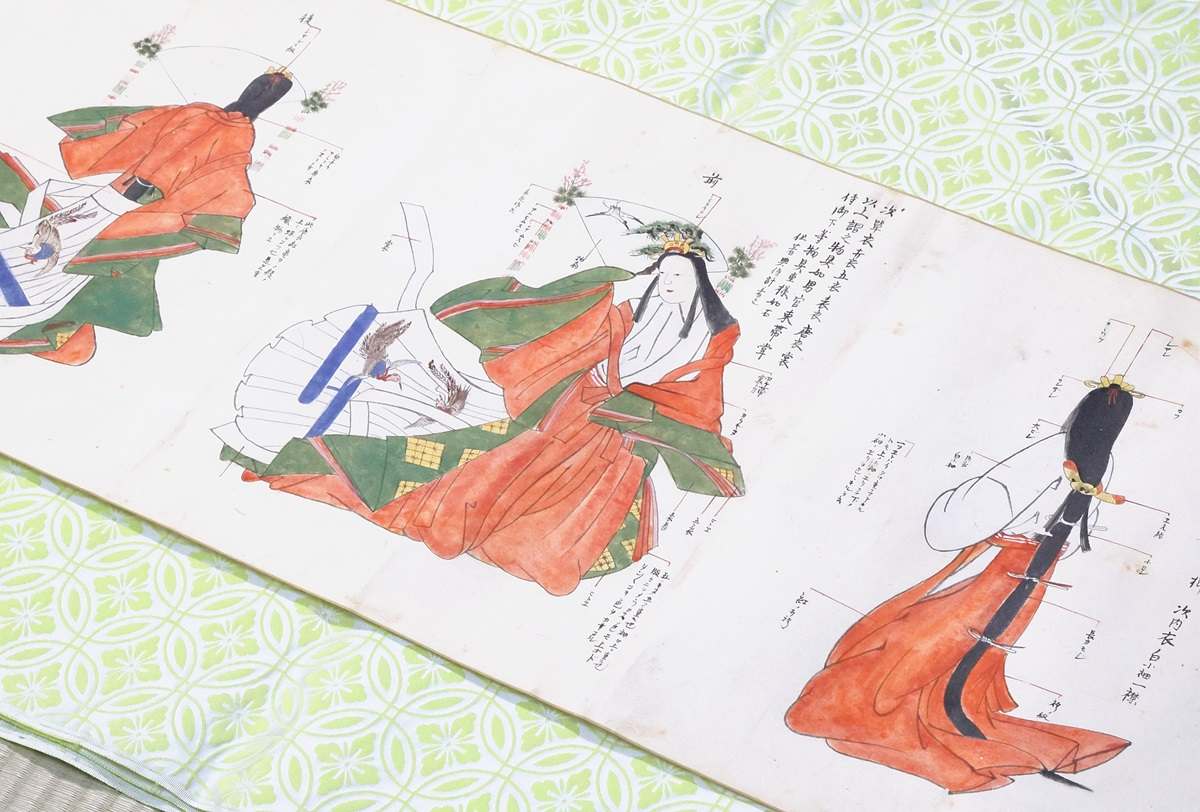
A scroll from hundreds of years ago passed down in the Kuroda Shozokuten depicts ancient attires.
At the shop, which is near the Sakaimachi Gomon gate on the south side of the Kyoto Gyoen National Garden, the Kuroda Shozokuten produces priestly robes and ritual furnishings for shrines as well as sharing with other attire shops the task of making costumes and dressing casts in them for Aoi Matsuri and Jidai Matsuri (Festival of the Ages), two of Kyoto’s three major festivals.
The shop used to cater to the court nobles who lived around the Imperial Palace, but now it fulfills orders from universities and museums. Sometimes, it delivers junihitoe robes to them.
When marrying into the family, Kuroda had already been familiar with needlework because she grew up in a family business that ran a kimono shop. However, it took her over 20 years to master all the necessary skills to deal with traditional attire, including tailoring with thick needles and cutting high-grade silk, where mistakes are not tolerated.
Expanding appeal
In those days of training, Kuroda made some new discoveries.
One day, her eyes fell on a bag full of silk scraps from robes. The scraps were not being used for anything, although they had traditional patterns representing auspicious motifs like butterflies, cranes and tortoise shells.
“They looked like treasures to me. I wanted to turn them into something I would love to have,” Kuroda said.
When she had some free time, Kuroda started making incense holders and coasters from the scraps. The number of completed accessories increased, and she decided to hold an exhibition. Her work was a big hit, with the accessories selling out within a single day. In response to demand, she expanded her range to include business card holders and tea ceremony pouches.
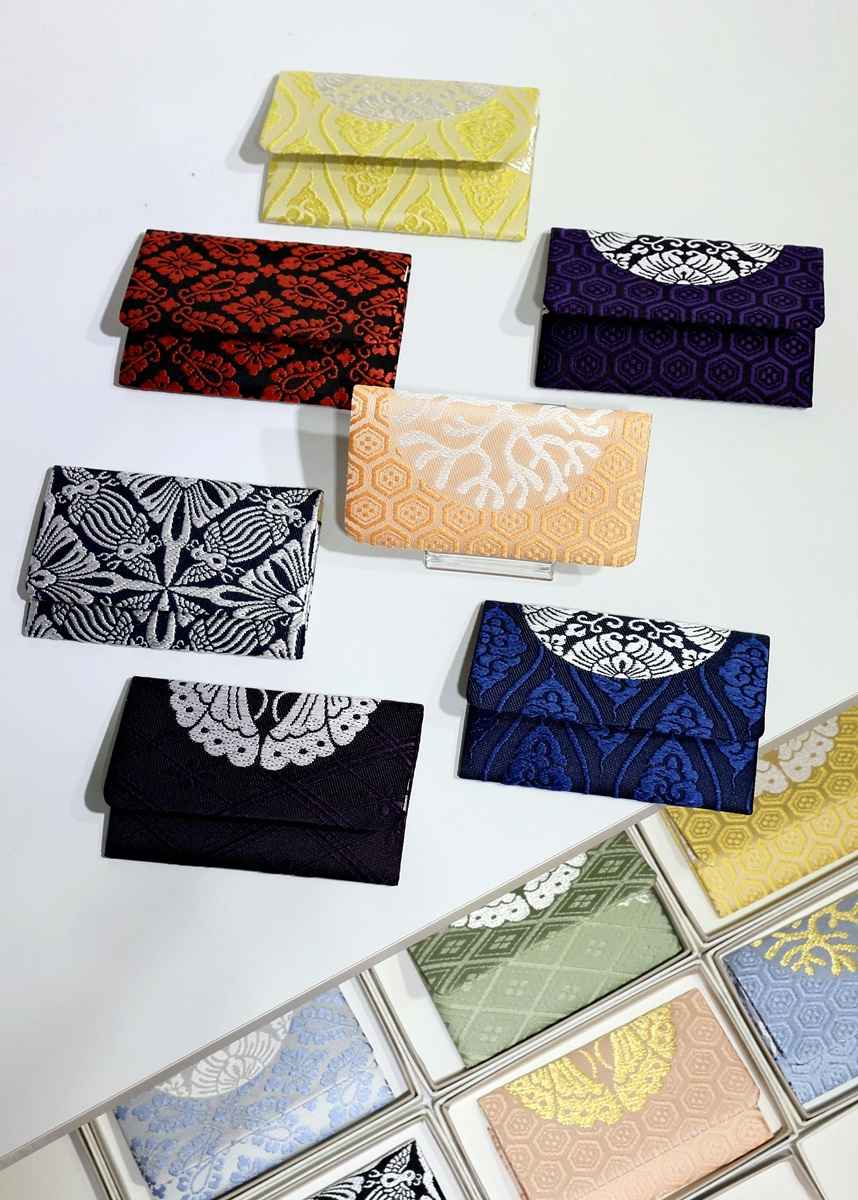
Business card holders featuring traditional Japanese patterns
Eventually, word of mouth led to so many orders that she could no longer rely solely on scraps to make the items. She turned to Nishijin textile artisans to create dedicated fabrics with the same patterns but in pastel colors to make them more accessible.
This marked the birth of a new brand: “Heishichi.” It is a name that had been given to the head of the Kuroda family up to three generations ago.
The shop started online sales to spread the appeal of the patterns worldwide. Two years ago, it was incorporated. Her son, Motooki, who used to work in the advertising industry, came aboard the business to help expand its reach to younger generations.
The traditional patterns continue to live on through her accessories. A cross-body drawstring bag features the toridasuki pattern, which was once used in the hakama pants of young noblemen. The long-tailed bird depicted on it has been considered auspicious since ancient times, and the toridasuki has the motif of eight of these birds arranged in a circle, which is believed to carry the wish “May your connections come true.” Its geometric design feels as though it were created with a contemporary artistic sensibility.
Kuroda is committed to passing on this thousand-year-old culture of prayer.
“These Japanese designs have been accepted throughout the ages. We want to pass them on to the next generation by giving them a new form,” she said.
***
If you are interested in the original Japanese version of this story, click here.
Related Tags
"Features" POPULAR ARTICLE
-

Sanrio to Open Museum in Yamanashi Pref. Dedicated to Founder, Exhibits Include Hello Kitty, Other Characters
-

Autumn Foliage Surrounds Visitors to Tokyo’s Showa Kinen Park
-

My Daughter No Longer Speaks to Me, But I Want to See Her and My Grandchild
-

Kumamoto: Public Bath Refurbished as Library Where You Can Chat, Take Photos
-

Frozen Vegetables: Demand Rises for Convenient, Tasty Domestic Produce
JN ACCESS RANKING
-

Keidanren Chairman Yoshinobu Tsutsui Visits Kashiwazaki-Kariwa Nuclear Power Plant; Inspects New Emergency Safety System
-

Imports of Rare Earths from China Facing Delays, May Be Caused by Deterioration of Japan-China Relations
-

University of Tokyo Professor Discusses Japanese Economic Security in Interview Ahead of Forum
-

Japan Pulls out of Vietnam Nuclear Project, Complicating Hanoi’s Power Plans
-

Govt Aims to Expand NISA Program Lineup, Abolish Age Restriction
